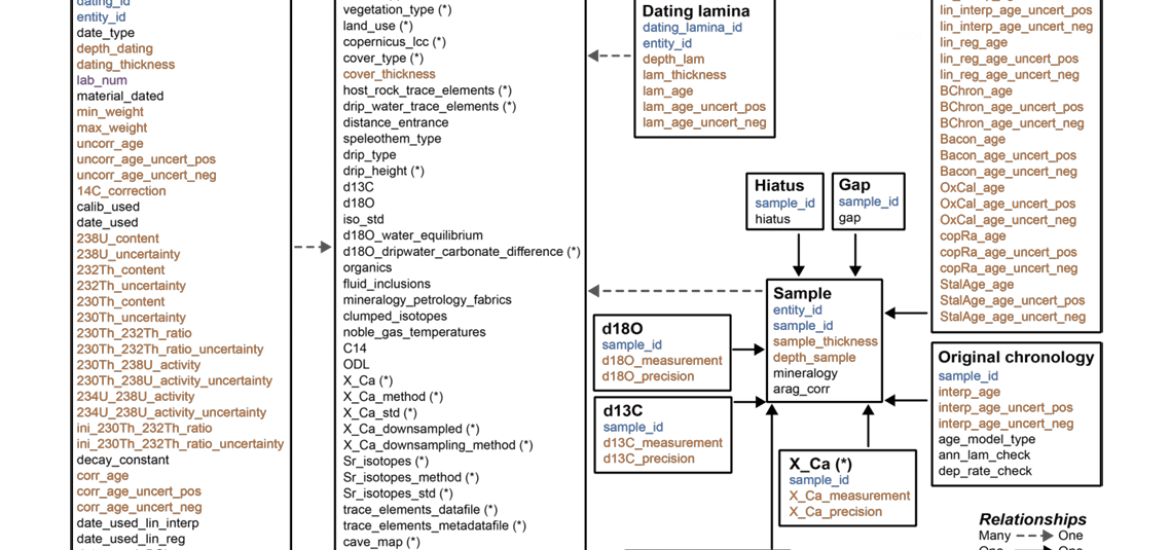- Home
- All News Overview
- SISALv3: A Global Speleothem Stable Isotope and Trace Element Database

Tuesday, 19 September, 2023
Preprint available by Kaushal N et al. and members of the SISAL working group, in Earth System Science Data.
"This study was conducted by SISAL (Speleothem Isotopes Synthesis and Analysis), a working group of the Past Global Changes (PAGES) project. In this framework, we received financial support from the Swiss Academy of Sciences and the Chinese Academy of Sciences. The design and construction of the SISALv3 database were supported financially by a PAGES Data Stewardship Scholarship to F. Lechleitner and N. Kaushal (DSS-108). We also acknowledge funding by PAGES, the 400 Minerva Stiftung (grant 3063000253), and the Institute of Earth Sciences at the Hebrew University Jerusalem (Israel) for supporting the organisation of a workshop to kickstart the initiative."
In their paper, the authors acknowledge the value of speleothems "with their precise chronologies, widespread distribution, and ability to record changes in local to regional hydroclimate variability" as an ideal source of information to close a critical research gap on high-quality reconstructions of past hydroclimate.
The authors present the most updated version of the SIAL database (SISALv3) which now includes trace element ratios and Sr-isotopes as additional, hydroclimate-sensitive geochemical proxies. The oxygen and carbon isotope data available in versions 1 and 2 have been substantially expanded. In addition, the database contains speleothem data from 364 sites from across the globe, including records of:
94 Mg/Ca
83 Sr/Ca
51 Ba/Ca
25 U/Ca
29 P/Ca 70
14 Sr-isotope
There have also been a number of other expansions and additions made to the database, as well as improvements to user-friendliness, making it easier to filter data.
The authors maintain that this version of the database "constitutes a unique resource of speleothem paleoclimate information that allows regional-to-global paleoclimate analyses based on multiple geochemical proxies, allowing more robust interpretations of past 75 hydroclimate and comparisons with isotope-enabled climate models and other earth system and hydrological models."